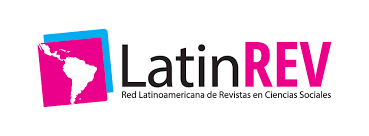Political historicity of the social stratum of mestizos and criollos in the colony
DOI:
https://doi.org/10.18050/regunt.v2i1.04Keywords:
social stratum, creole, mestizo, indigenousAbstract
The objective of this article was to analyze the type of social stratum that developed in colonial Peru, as well as to know if the population of the Spanish Crown and subjects settled in the country and the Americas had differences or not in their rights, from a perspective of political historicity. In this sense, information and specialized bibliography on the subject have been reviewed in order to understand the pre-existing social stratum during the Colony, its composition and stratification. Finally, it is concluded that, in the context of the time, a marked social inequality was evidenced among its inhabitants; that is, between the dominant power, creoles, mestizos and indigenous people.
References
Ares, B. (1999). El papel de mediadores y la construcción de un discurso sobre la identidad de los mestizos peruano (siglo XVI). Entre dos mundos: fronteras culturales y agentes mediadores, 37-59. http://hdl.handle.net/10261/35741
Catelli, L. (2012). Creole Painters, Casta Painting, and Internal Colonialism: Racial Discourses in New Spain in the Late Viceregal Period. Cuadernos Del CILHA, 17. https://revistas.uncu.edu.ar/ojs3/index.php/cilha/article/view/4107/2965
Gómez, L. (2007). Lo criollo en el Perú republicano: breve aproximación a un término elusivo. Histórica PUCP, 31(2), 115-166. https://revistas.pucp.edu.pe/index.php/historica/article/view/56/57
González, C. (1993). Emigrantes y comercio de libros en el virreinato del Perú. Histórica PUPC, 21(2). https://revistas.pucp.edu.pe/index.php/historica/article/view/8501/8845
Guardia, S. (2013). Exclusión y género. Las mujeres en la independencia del Perú. Primer Congreso Internacional. https://www.researchgate.net/publication/280234876_Exclusion_y_genero_Las_mujeres_en_la_Independencia_de_America_Latina#fullTextFileContent
Haro, V. (2019). Perú: precio de los Esclavos 1650-1820 (African Slavery in Peru: Slave Price. Revista Escuela de Historia, PUCP 2(18), http://www.scielo.org.ar/pdf/reh/v18n2/v18n2a03.pdf
Huaringa, S. (2017). La discriminación por el color de piel, la raza o el origen es un rezago colonial. PuntoEdu. https://bit.ly/3is3GfM
Mazzotti, J. (1996). La heterogeneidad colonial peruana y la construcción del discursocriollo. Temple University. https://n9.cl/enj9z
Paz, F., y De Oses, I. (2019, December 19). Tiempos Modernos | Las Indias no eran colonias | - YouTube [video]. YouTube. https://www.youtube.com/watch?v=LDfieoEDnhs
Piz, R. (2010). La nueva sociedad colonial estuvo dividida de la siguiente manera. El Virreinato. https://bit.ly/3Ur8m33
Sascha G., y Valmaceda, E. (2021). Researching in the Age of COVID-19 structured Literature review of Psychological and Social Research Projects on the COVID-19 Pandemic in Peru. Volume I: Response and Reassessment. https://bit.ly/3XYC7v2
Saignes, T., y Bouysse-Cassagne, T. (1992a). Dos confundidas identidades: mestizos y criollos en el siglo XVII. Senri Ethnological Studies. 33, 14-26. https://www.semanticscholar.org/paper/Dos-confundidas-identidades-%3A-mestizos-y-criollos-Saignes-Therese/6ed79fd1b5ed44736eed9c4570df29aa2e53f50d
Saignes, T., y Bouysse-Cassagne, T. (1992b). Dos confundidas identidades: mestizos y criollos en el siglo XVII. Senri Ethnological Studies.
Stolcke, V. (2009). Los mestizos no nacen sino que se hacen. Avá. Revista de Antropología. http://www.scielo.org.ar/pdf/ava/n14/n14a02.pdf
Thorp, R., y Paredes, M. (2010). La etnicidad y la persistencia de la desigualdad. Instituto de Estudios Peruanos. 1-276, https://n9.cl/e5usl
Tord, J., y Lazo, C. (1984). Una reseña crítica de la dominación en el Perú virreinal. Histórica PUPC, 8(1). https://revistas.pucp.edu.pe/index.php/historica/article/view/8140/8435
Downloads
Published
How to Cite
Issue
Section
License

This work is licensed under a Creative Commons Attribution-NonCommercial 4.0 International License.
La Revista Regunt usa la licencia Creative Commons de Atribución; pudiendo:
Compartir — copiar y redistribuir el material en cualquier medio o formato
Adaptar — remezclar, transformar y crear a partir del material
para cualquier finalidad, incluso comercial.










